Gran Turismo 7 Review
Clean racing fun
Racing games have always been a staple of a new console launch. It's a great way to showcase new hardware, wrapped in an accessible genre to entertain the masses. However, with Gran Turismo, there have been some recent mistiming. With developers Polyphony Digital at the helm since late 90's, the simulation racing series has gone through its share of ups and downs. Most recently, GT5 was caught in a mix of trying to meld old car models with new ones, and GT6 chose to launch on PS3 when PS4 was hitting stores. GT Sport decided to throw the book out entirely and focus on online racing, as fans were not sure which direction the series would go. Gran Turismo 7 steers the franchise back into its typical lane, offering a highly competitive and challenging racing game, but one that's a bit lacking in innovation and new modes.
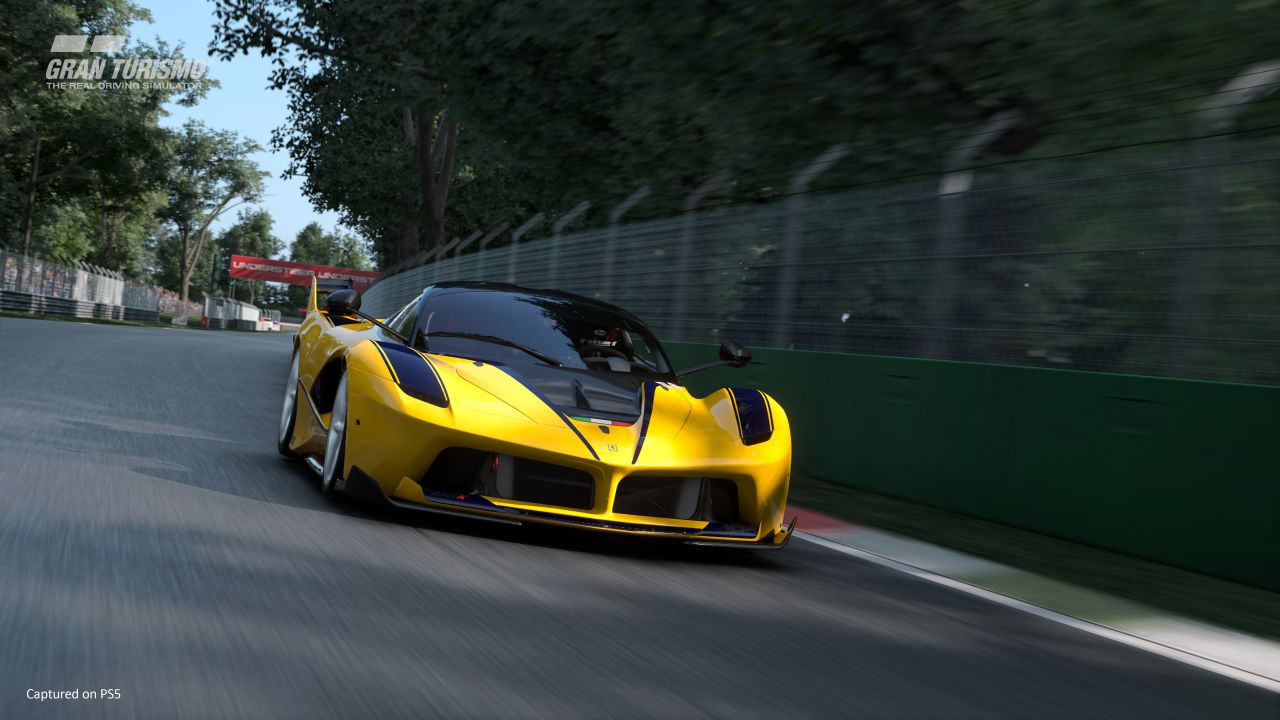
After a non-existent campaign in GT Sport, Gran Turismo 7 looks to rectify this by offering a structured single player experience. Players will be introduced to the cars and tracks in the game by following a series of quests from a Café owner. Each quest will require you to collect three cars, typically grouped by manufacturer or type – from coupes and muscle cars to Porsche and Alfa Romeo collections. Doing each quest is easy – you can either buy them outright, or you can complete three specially marked races and get them as a reward for finishing at least in third place. The latter option is obviously the best approach – it gets you racing, and rewards you with free cars. After getting the three required automobiles, you return to the Café menu, where the owner will give a short overview of the importance/history of the cars you have collected, as well as the next set of three to obtain. Sometimes, instead of collecting three cars, you will be asked to visit the game's various menu hubs, or participate in a quick tournament (which is just twoto five races in a row). This setup is straightforward but rather uneventful, and it repeats for the entire campaign.
There are also half-hearted attempts at giving the game some personality. For example, at the same Café there is an old man who will tell you some random facts about the car you are currently using. If you bring a special car, you could encounter some more famous faces from the automotive world. Though to be clear - these encounters are just a few lines of text and a photo. Before and after races, there are also optional text bubbles from random individuals. These appear to be real-life professional video game drivers, and while some may consider their inclusion a cool factor, most players probably won't bother to see their lines. The brief text boxes are usually random sentences about where they grew up and why they like a specific car brand. There are rare occasions when they offer tips or history of the track you're about to race on, but for the most part it's rather aimless.
One of the key aspects that fans of GT franchise enjoy is taking any old Civic and using it throughout, continuously upgrading it to keep up with higher tier vehicles. The GT7 campaign is not geared towards that – as for each new three-race quest series, the requirements change constantly, needing a specific manufacturer, country, or drivetrain type. Instead, it's all about giving you a large baseline of cars. By the end of the campaign, players will have over 60 cars in their garage, without having to purchase any. This is thanks to the fact that each new quest's required car type is usually already in your garage, earned from a previous quest. Getting free cars is nice because maintenance and upgrades can be quite draining on your credits balance. Buying just a couple of brand new cars can quickly hurt your bottom line.
When you do decide to shop around, there are three options. In the Used Cars lot, you can pick up a variety of lower-end cars at a discount. These cars aren't in new condition, but this doesn't seem to matter a whole lot. In fact, the game never really explains their disadvantages (aside from vanity reasons). The other option is to head to Brand Central, where you can navigate to individual manufacturer pages and see their brand new cars. Lastly, there's Legend Cars lot, where some classics await for those who can afford them. This design is similar to previous games, and what continues to be apparent is that GT7 remains rigid in its refusal to adopt quality of life changes. There's no way to cross-shop or compare cars; you have to know exactly what you want and where to get it. Otherwise, you're stuck browsing between multiple separate menus, trying to pick something out.
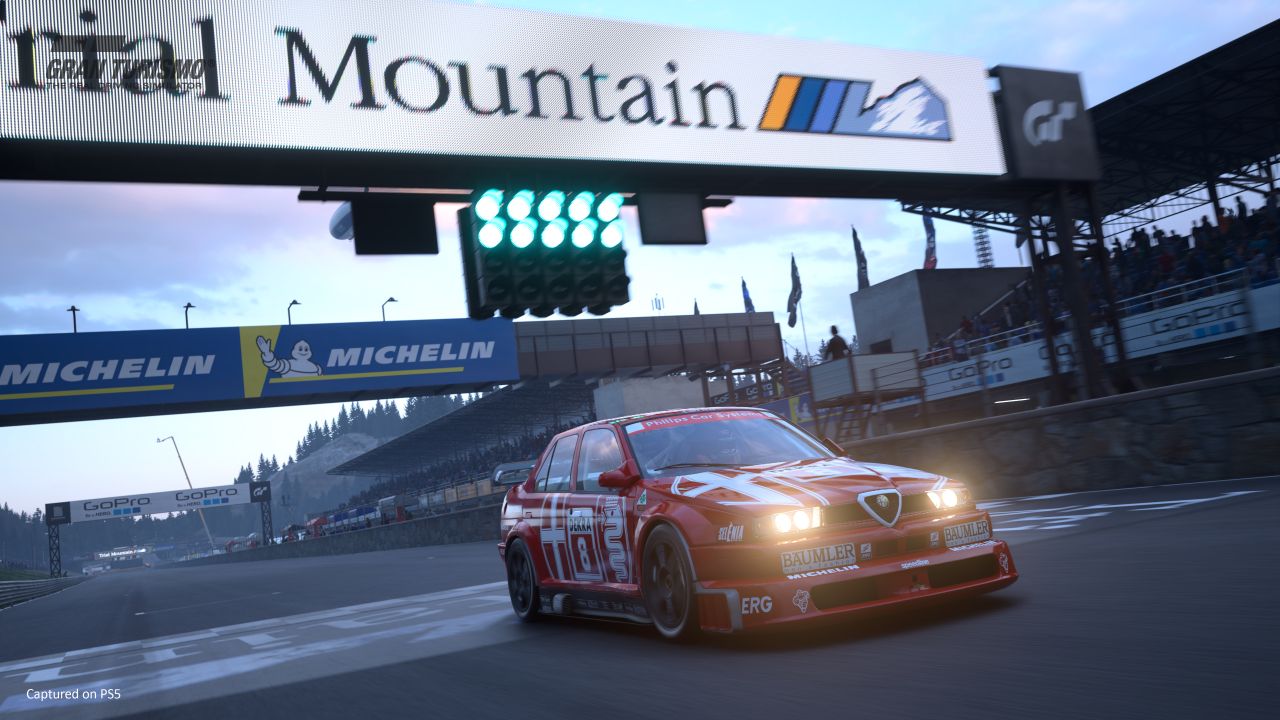
Let's say you want a rally car or a truck – you have to start with a visit to the Used Cars lot and see if any are for sale, and then start going into the Brand Central's each separate manufacturer showroom, one by one. It's a needlessly unoptimized process, but at least you do get to check out the pages of each manufacturer. Other than the showroom that lets you buy cars, Brand Central has the Museum menus – these offer a slick recap of the major points in history of the car maker that you can scroll through. In parallel, you can also check what other world events took place at the same time. For whatever reason, this feature is not available for all – for example it's missing for Ford and McLaren. The last options are some videos (seemingly pulled directly from YouTube) and a link to the official website, which seems half-baked. Feature consistency between all brands would have been good.
There are around 420 cars at launch in the game, from a variety of manufacturers, including Audi, Porsche, AMG, Lamborghini, Mazda, and of course a large assortment for Toyota and Honda, alongside some fictional GT Concept cars. The game still leans towards offering a multitude of different Supra's and Porsche 911's, than having a wider variety from more car makers. With your free car collection growing, you'll need to keep on top of the increasing PP (power rating) suggestions for the races. In the Tuning Shop menu, you can buy new parts that boost performance, from brakes and air filters, to ECUs and tires. The upgrade process is easy, and you can swap out the parts in the garage to tweak your power, as well as individual components for fine-tuning. However, it's important to note that some upgrades - such as weight reduction and engine parts - cannot be undone/swapped out; the only option is to get a brand new engine and body, which costs credits. This means you have to carefully consider your upgrades, and again, money management is rather important.
The GT Auto Shop menu is where you'll head to for some maintenance and aesthetic changes. Players can apply a variety of paints and decals to both the cars and their driver avatar (body and helmet). You can also get new wheels, side skirts, spoilers, and even a wide-body kit. All of these options are welcome, but are still behind other games in the genre. Strangely, when shopping for new paint colors you get a preview of a few random cars instead of your own. In more functional terms, it is possible to wash the car, give it an oil change, or restore its body rigidity – meant to bring the three "health components" of each car into the healthy status. Presumably, these components deteriorate over time, but if the game sticks to its simulation aspect, it would take months of using the same car before this becomes an issue. We had one car drop to "fair" oil status after less than 1k miles - but the game makes no mention of how (if at all) this affects performance. And it's possible to do an oil change on a Tesla – which you can attribute to either lack of attention to detail, or further proof that these features are largely window dressing.
The purpose of restoring the body rigidity is also unclear; the damage model is nonexistent anyway. We purposefully did a few races where we abused the car – causing multiple high-speed, devastating crashes, with damage set to full. The worst that happened were a few paint scratches and some bumps on the fender that you could only barely see under certain angles and light conditions. No cracks in windshield or headlights, no side mirrors or other bits falling off. In mechanical terms, the engine damage prevented full power from being delivered, and the car was swerving to the side, but it was still possible to finish the race. Afterwards, there was no change to the car's health, and neither the mechanical nor cosmetic damage carried over to future events. It's a disappointing aspect of a game that tries to pride itself on simulation.
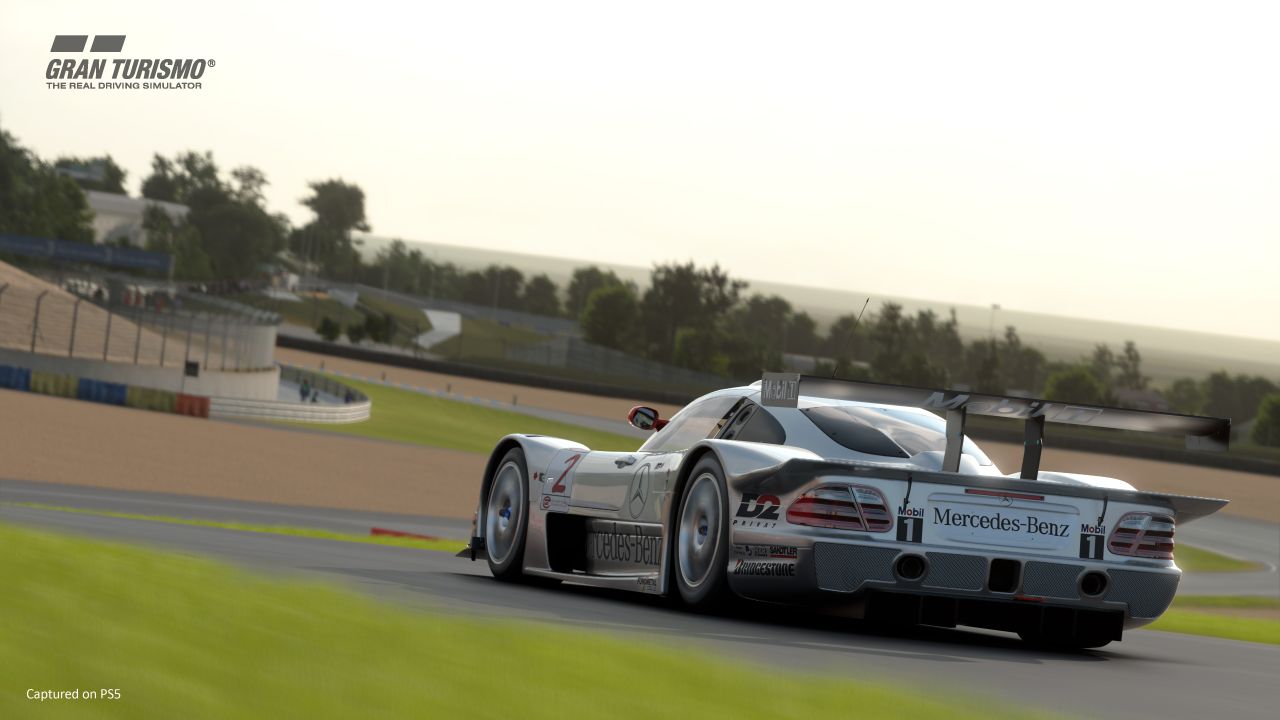
Though perhaps that should come as no surprise. The Gran Turismo franchise has always been a "clean" simulation. The only thing it's interested in is delivering a precise and calculated on-track experience, with everything else being secondary. To that end, it once again succeeds. From the slowest Prius to the fastest GT Concept car, the racing continues to be an exemplary experience. As you navigate each corner and straightaway, the handling and carefully crafted physics combine to create both thrills and spills. There are few more stomach tightening moments than seeing and feeling the car weight shift on a tight corner, or having the tires lose grip on a rainy day at Nürburgring. You also feel the huge difference as you move up in performance class, and the cars finally start being more powerful and responsive, so you no longer feel like you are driving a slow boat on land. In these higher echelons, the stakes are higher too, and mistakes are more costly – you almost have to re-learn how to drive and get more courageous with your handling. The game supports a variety of wheel setups, though in our case the standard DualSense controller did a fine job. There's a variety of rumble effects and adaptive trigger resistances, with effects similar to most other games.
While challenging, and there is a very high skill ceiling, newcomers should be well-served by the available assist options. You can turn on visual and gameplay options, such as stability management and automatic breaking, to help you stay on the road. There is still no modern rewind option though, so if you make a big mistake, the whole event must be restarted. The AI is okay and fairly predictable – across three difficulty levels, they will mostly stick to the racing line. Towards the end of the campaign though, races suddenly get long and challenging, and the front three cars tend to quite clearly pull away from the pack, so it may be impossible to catch up. Rain is also present, making for extra tough conditions.
You'll be racing across 34 tracks included in the game at launch, with the usual mix of real and fictional. Between Suzuka Circuit, Tokyo Expressway, and Daytona, it's all mostly places you'll be familiar with; each track offers between one to three versions. Apart from a few pre-set races at each location that the campaign will take you to, players can also setup their own arcade experiences and tweak all aspects of the rules. You may want to take advantage of this, as the career mode races end up feeling quite repetitive– you always begin at the back of a rolling start of around 14-16 competitors. It's the typical Gran Turismo experience, though you have to wonder - in a sim game - how realistic is it for a driver to constantly start last and always be expected to reach the podium.
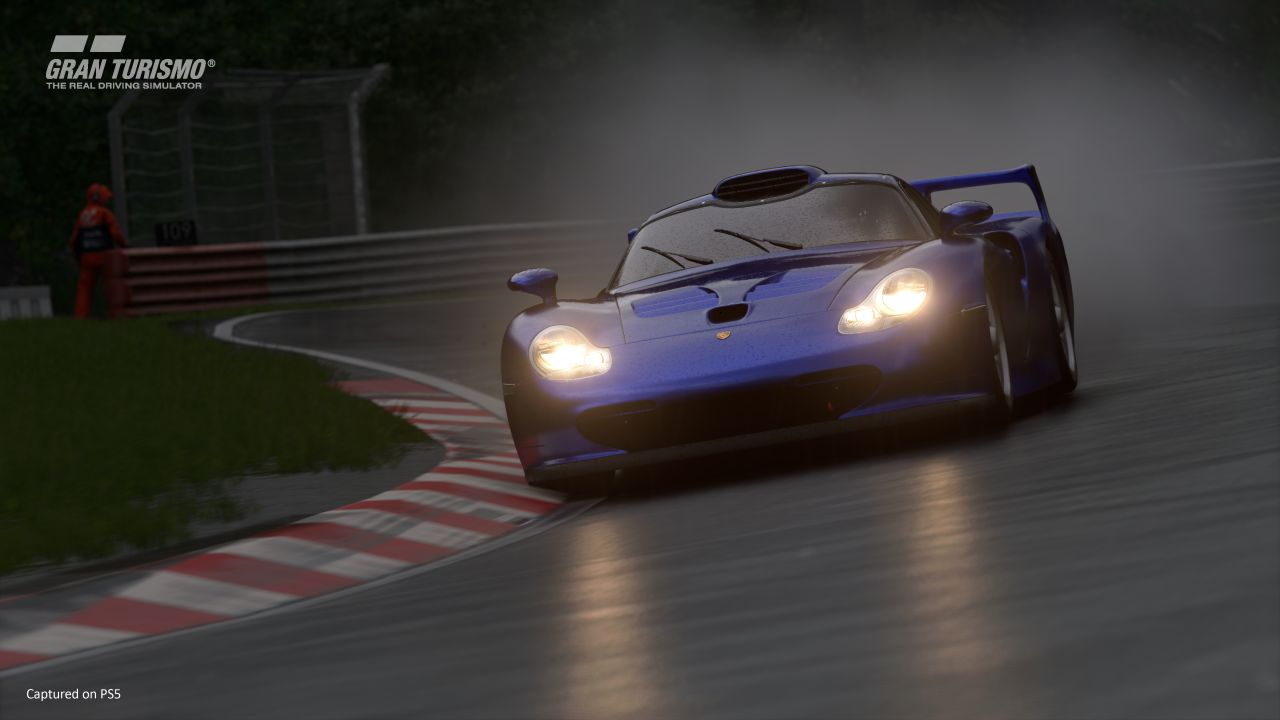
There are a few more options to help diversify the racing. The usual License Center returns, asking players to complete a series of challenges using specific borrowed cars on pre-set portions of a track. It's easy enough to get a passing Bronze grade, but trying to go for Gold and shave off the milliseconds off your time can be addicting, as you chase either your own or a friends' ghost car. A similar setup can be had under Circuit Experience, where you focus on perfecting a specific track. Other track-specific options include setting up a Time Trial or a Drift Trial. Last but not least are the whacky custom challenges, which again make their return, and include races, passing and slipstream challenges, drifting and cone smashing. Most of these activities, because the car and track are fixed, have friend leaderborads to compete against, and may also award you a free car.
The challenges provide not only a way to shake up the monotony of regular races, but also a chance to drive some very high performance cars. As mentioned, it will take time to afford the high-end vehicles in the game, as the economy is pretty stringent. There is no free-play or arcade mode where you can choose any car you want – you are always limited to only the cars you own. The game tries to offer a little boost by giving away a prize spin every time you increase the car collection level or for some specific chapters in the campaign, or after driving a certain distance each day. However these quick raffles always end up disappointing – having done over 30 of them, the least valuable prize always gets picked. Maybe it's bad luck, or maybe the odds are far too low – you could theoretically win lots of credits or even a new car, but we've never seen it.
GT7 once again has an always-online requirement. If you are not connected to the Internet/PSN, the only thing you can do is an arcade race – and even then, it's artificially restricted to about 10 fixed cars and only the courses you've unlocked in the campaign. Offline mode also lets you participate in Music Rally. This new mode has just six races, where the goal is to drive in a provided classic car as far as possible before the song ends. There is a beat number that counts down, and you have to pass gates on the track to add more. However, apart from the challenging final event, this is a non-factor. You are only evaluated based on how far you managed to get within the time of the song, so really, it's just a slight variation on other events. With just six races, and being entirely separate from the campaign, it's a minor and quickly forgettable addition.
You can't even go into the Scapes mode while offline, which is the returning photography area from the previous games. While you are again only limited to cars you actually own, you can setup a scene, position the car, and take some photos while adjusting lighting, aperture, focus, and other related settings. You can then share these photos – along with your custom car liveries and creations – to the Showcase area, which is like a pseudo social media portal where players can upload, like, and download content from others.
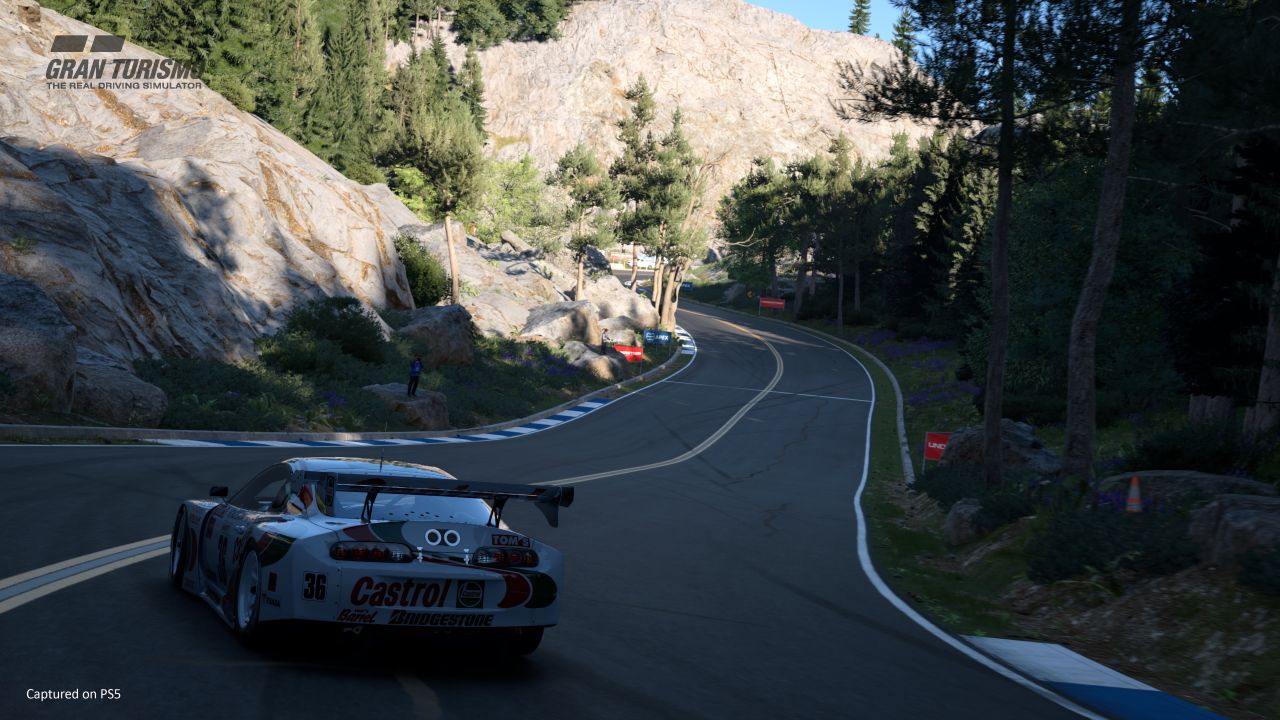
Eventually, with your car collection built up and tuned, you'll want to head online. There are three modes of play here. You can participate in a local two-player race – but strangely enough, this has the same arbitrary limitations as the offline mode; you can only pick one of a few pre-selected cars. Then there's the Sport mode – largely unchangedfrom the previous game, offering fixed races. There are three races per day, occurring at the :00, :20, and :40 minutes of each hour. You can set a qualifying time (just one is needed per day, not every hour), and then race against others when the time comes. This competition-focused mode still gives you Skill and Sportsmanship ratings, which should help with matchmaking against more like-minded individuals.
Lastly, the more traditional Multiplayer Lobbies let you manually sort through and join rooms. Everything is functional, but feels a bit dated, with no typical modern casual matchmaking just to get into a race. Racing online goes as expected – driving is quite smooth with other players as long as they have a decent ping to you, otherwise they may warp around the track. There is one casual mode available – a new Meeting Place option, though it's hidden under the track selection in career mode. Here players can connect to pre-made lobby rooms to just hang out with others on the track, with no official races taking place.
In presentation, like in its racing, GT7 offers a clean and streamlined experience. The UI during races is focused and only displays the vital info, though a new popup indicates what car you just passed. The cars are all very well detailed inside and out, and the audio effects from the engine roar can be impressive. The tracks are well crafted too, though there are occasional instances of light and shadow flickering and object pop-in. Ray Tracing mode is available, but only in the replays and Scapes mode, not during racing. Otherwise, the game runs at a flawless 60fps, and has virtually no loading times. There is a full day and night cycle now, and the time can change dynamically during the race, adding to the atmosphere of endurance events. The game looks great at night, with impressive lighting effects and the headlights carving up the scenery on the side of the track. The music is the usual mix of classic and soft tunes in the menus, and more pop/rock tracks during races.
Gran Turismo 7 makes its PS5 debut with an unrelenting rigidity. It's a game that continues to offer some fantastic simulation racing on the track, a sizable collection of detailed cars, and an enjoyable variety of challenges across License Tests and more whacky alternatives. But elsewhere, it's the same GT that has always been. Although the single-player is more structured, it's little more than a repetitive way to give players a bunch of free cars and have them experience all tracks in the game. All of the same modes and racing experiences are back, and the sole new addition of Music Rally is a nonstarter. Online modes also remain functional, but a bit stuck in the past. If you've been craving a triple-A racing simulation that values its clean driving above all else, Gran Turismo 7 continues to deliver. But as a franchise, other than improving on its visuals and tweaking the simulation, not much of a leap has been made.
 Comments
Comments

















